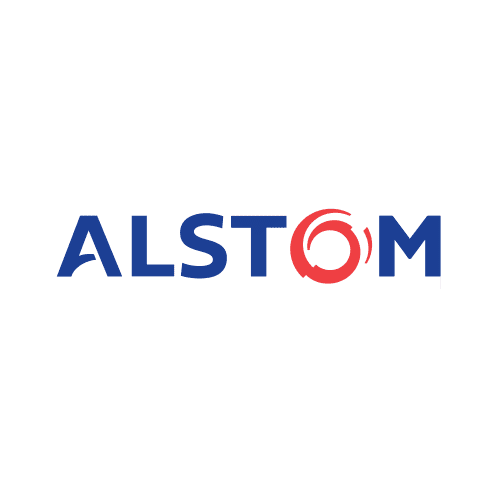
Successful with agility
Surviving in a volatile world
A paradox in business enterprises is: “Growth creates complexity and complexity is a silent killer for growth.” Only about 10% of companies are able to profitably grow over a longer period of time. However, growth is not the problem, rather the increasing complexity that arises when companies, for example, develop new products, expand into new markets or establish new fields of business.
Complexity brings uncertainty, and uncertainty gives rise to anxiety. That’s why many organizations focus on their internal processes to reduce uncertainty through administrative structures to create order. But order often becomes bureaucracy, and bureaucracy then becomes paralysis. As a result, increasing complexity gradually becomes a killer of growth, and organizations lose what once made them so successful – speed of response.
What makes the world different today? Economic change is demonstrably becoming more volatile. What we decide or think today may be outdated tomorrow. Business thrives on uncertainties, but these uncertainties also hold the potential for growth.
How can companies position themselves in the future and refresh their reaction speed? We answer these questions with our approach to deploying agility in business. We take a holistic and systemic view of the enterprise, and we consider the context of each organization.
Frameworks such as Scrum, Kanban, and agile Shop Floor Management are usually the first step in making agile working methods visible and learning from them. However, they represent only a small part of the bigger picture. In order to make the company fit for the future, change must be target-oriented and purposeful. The aim is to adapt the company to the requirements of the market and to use agile working methods and structures sensibly.
Agility is not an end, but represents a response to an environment that is perceived as increasingly complex. In this context, it must be consciously decided in which contexts adaptability as well as the ability to change are required and where agility has a meaningful effect.

Jan Haug
PartnerSTAUFEN.AG
Jan Haug has been working for Staufen AG since 2007. In his current role as a partner, he manages comprehensive transformation projects in various industries. Already during his studies of industrial engineering, Jan Haug gained consulting experience in various projects at the then DaimlerChrysler AG in the area of Mercedes Benz production systems. For EHEIM GmbH & Co. KG, he supervised the construction of a production facility in China as a technical consultant. From 2013 to 2017, he held various management roles for Staufen China at the Shenyang and Shanghai sites. Jan Haug has extensive experience in lean management. He is an expert in agile and lean process organization design and project management in both development and other administrative areas. Another core competence is the optimization of management processes based on shop floor management.
Read moreSuccess stories from satisfied customers and partners

RESULTS
- > 50% lead time reduction
- 25 – 30% efficiency increase
- 30 – 40% lead increase with the same structure
- > 90% adherence to schedules
- Ensuring transparency in overall projects
- Coordinated control of tasks in the system prioritization of projects and tasks
Ergebnisse
- Development of a top-down visual management with KPIs
- Development of a regular communication cascade for agile project management
- Integrated planning through the last planner method
- Task control in the cascade for all trades
- Escalation management in the cascade management
- Coaching for leadership through timely deviation management

Always know what’s going on. Manage every area of your company in real time. Agile. And highly efficient. Enable agile teams to work together across interfaces, across divisions, globally and in real time. Linked processes and task boards establish a continuous transparency as well as automatic aggression of process and key performance indicators. In addition, you will be able to quickly recognize deviations and define counter-measures.
ValueStreamer® can also be optimally integrated into your existing IT system landscape and connected to adjacent systems through harmonized interfaces.

Built on sand? No way! – Alstom
The French Alstom Group relies on Shop Floor Management and a new management culture in the construction of the new subway for the metropolis of Riyadh – and with great success. It does not take long for Cristina Anderiz to gain the attention of the entire hall at the RheinMain Congress Center, which has filled up to the last row. And that is not because she is one of the few women among the more than 300 participants of the 6th Engineering Summit. No – on this morning Anderiz, Riyadh Project Director at the French Alstom Group, captivates the who’s who of European plant engineers gathered in Wiesbaden, above all with impressive figures.
Read moreWhat does agility mean?
our definition
An agile company is able to recognize changes at an early stage, to adapt itself quickly to new circumstances at any time – taking into account its own needs – and to design the most effective and efficient form of organization in each case.

Four central characteristics distinguish an agile company:
Agile organizations create value through the collective development of the value network with all its stakeholders. The customers are at the center of this. All structures and processes of the social system or network are aligned with them.
The central elements of our consulting approach in agile transformation are derived from this. The elaboration and communication of the entrepreneurial meaning and purpose of the change, definition of the entrepreneurial intent and the design of the consulting interventions follow the principle of orientation around meaning.
Employees in the organization base their actions on what “makes sense” to themselves and the organization as a whole. For this reason, it is necessary to determine the meaning, make it understandable, and convey it in specific, everyday situations (e.g., with the question: How do we know that agile working/an agile organization makes sense for us and our customers?). Customer orientation is thus inherent in agile companies, because an agile organization is not an end in itself or an occupation in itself; rather, it supports short-cycle, strongly feedback-driven production of products, services and services that is permanently oriented to user needs.
In companies, there are processes that are perceived as either complicated or complex. When it comes to complicated processes and problems, there are no gaps in knowledge. There is sufficient knowledge in the company on how to solve complicated and predictable problems. Complicated processes must be standardized as much as possible. They anchor the stability of the organization and should be designed as efficiently as possible, i.e., lean. One example of this is the assembly process in series production.
Complex processes, on the other hand, pose a greater challenge. Here, it is first necessary to gain information on certain phenomena. Interdisciplinary and closely cooperating teams that focus on a clearly defined customer benefit gradually contribute to increased knowledge. These teams (e.g., development or planning teams) work efficiently, but the focus is particularly on effectiveness, combined with innovative strength, as well as on dealing with constant, unpredictable change. There is a lot of potential for dynamism here.
However, stability and dynamics cannot be clearly separated from each other; rather, there is a mix of both often with a tendency in one direction or the other in the respective contexts under consideration. But continuously balancing stable and dynamic elements in an organization requires a suitable structure.
Important principles for an agile organization are transparency and a willingness to experiment. In order to make decisions in agile companies, figures, data and facts are made transparent and accessible to every employee. In extreme cases, this can involve a comprehensive look into all the information about the company. But it is important that at least existing knowledge gaps relevant for fulfilling the customer’s request are made transparent in order to be able to divide the knowledge problem into small experiments or task packages. Each set of tasks defined in the backlog in the Scrum process model has a clearly defined result that must be produced within a certain period of time (for example, within a four-week sprint).
The method for performing these sprints can be based on lean management, agile software development or other formats. The only decisive factor is that continuous and rapid iterations in the teams ensure clarity about the progress of knowledge, promote exchange within the team and, in addition, enable joint learning within the organization. If an experiment does not contribute to the desired result, it is terminated consistently and early (“fail early, learn faster”). This iterative and transparent system enables the organization to consciously design decision-making processes in order to make far-reaching decisions in a comprehensible manner and based on the necessary knowledge.
In contrast to heroic leadership, in which the leader alone sets the course and ensures implementation through command and control, leadership in agile organizations is no longer tied to just one person. Leadership is rather understood as a team sport, in which leadership is tied to a role and can be exercised by different people depending on the context. The respective person, including their abilities and talents, takes center stage. Consequently, in certain contexts, each employee can take on the role of a leader in the team, while in other situations they take on the role of a technical expert and specialist. But this requires strong communication skills, role flexibility, and competence regarding switching roles from the people involved.
However, agile self-organization does not mean being left alone! Agile leadership defines and creates the framework conditions for action, for example, to develop an entrepreneurial culture that is characterized by a corresponding willingness to take responsibility and action. With such a culture, employees feel responsible for their areas of activity and know how they can contribute to the corporate strategy. In order to promote this type of culture, leaders primarily act as coaches and sparring partners to empower and support employees.
MIT Professor Ed Schein, one of the fathers of organizational psychology and organizational development, sums it up briefly: “In an increasingly complex world, leaders simply do not know enough to decide on their own what is new and what is better. Leadership is therefore a team sport, not an individual heroic activity.” Today, leadership is a team effort that shapes decision-making processes and can accelerate and decelerate them. Decisions should be made where there is the necessary knowledge and expertise, without having to go through several levels of hierarchies.
Become agile
start now
As in sports, peak performance in business is usually a combination of strength, speed, discipline and especially attitude. And just as every high-performance athlete has a coach to accompany them on their journey, give them direct feedback and plan the next steps so that they can become even better, this is also effective for companies that are moving towards agility. Acting in an agile manner requires changing old habits, hard training, and constant adaptation to changing conditions – both those of the market and internally. For more than 25 years, Staufen AG has accompanied companies on their path towards peak performance. Projects in the context of agility include, for example, the reorganization and optimization of large infrastructure projects according to agile project management principles, transitioning to an agile network organization with dynamic teams or company-wide strategy development according to the principle of setting your own goals.
Our fundamental understanding
Employee involvement is the key to success
Every company is special. For this reason, we are happy to work with you to set up your own development program that is perfectly aligned with your needs and will enable you to reach your goals – accompanied by smart change architectures and designs that motivate employees.
- How and more importantly where exactly does agility make sense for our business?
- How can we respond more quickly to changes in customer needs?
- How do we create effective and efficient collaboration, in which employees can interact with passion?
- How do we use appropriate methods, frameworks and practices in our company?
- How do we generate beneficial framework conditions for agile work at the value stream level and beyond?
- How do we create sustainability during change?
- How do we ensure that all employees find meaning in their work?
- How does distributed and appreciative leadership work and how do we establish it?
Status Quo
Determine your company´s potential for transformation
It is first necessary to assess the complexity of the industry or sector. Secondly, it is important to evaluate the solutions the company can offer in the current situation in order to manage the environment’s existing complexity. STAUFEN. Organizational Capability Assessment (OrgCap) assesses the company in a systematic and holistic manner, answering the question: How pronounced are the company’s abilities to deal with market-related and environmental complexity?
- What environmental factors and complexity drivers are there in our context that we need to respond to?
- How does the status quo of our company need to change so that we can adequately respond to complexity?
- How and more importantly where exactly does agility make sense for our business?
- What potential for transformation does this create for our company? e establish it?
The Organizational Capability Assessment considers various environmental factors and the existing culture.
Context analysis is used to evaluate the environment. We address complexity drivers such as the sales market, value networks, technologies, politics and society, environmental protection, macroeconomic factors, and product requirements.
Analyzing various aspects in the business environment creates transparency with regard to the company requirements. The company context is determined based on the following criteria: Volatility/dynamics, uncertainties, ambiguity, complexity, external dependencies, product/service characteristics and competitors.Environmental factors and their level of complexity determine whether agility can be meaningfully applied.
The company’s current constitution and the associated corporate culture are evaluated by means of a field of action and culture analysis in order to identify starting points for improvement and success factors for agile transformation. In doing so, we address eight fields of action: Mission statement with values and principles, leadership with leadership understanding and styles, structure of the organization, process maturity and focus, infrastructure, for example in IT, and workplace design, product and service design, and communication and interpersonal relationships. These fields of action are addressed and developed together with our customers in the context of agile transformation.
Evaluating both analyses (the corporate constitution and the corporate culture) provides clarity regarding the potential for transformation.Based on this, we develop a target image for the transformation and the associated roadmap.
Doing Agile
Implementing agile methods in day-to-day business
By introducing visual management and working with Scrum, Shop Floor Management or Kanban boards on a daily basis, the change process to an agile organization becomes more tangible.In particular, boards, along with other tools such as roles, artifacts, and events, represent the visible part of change. This part of change is referred to as “Doing Agile” and is usually the first step in the journey towards becoming an agile organization.
- How can we respond more quickly to changes in customer needs?
- How do we create more transparency to optimize our processes?
- How do we systematically uncover weaknesses in our expertise?
- How do we create effective and efficient collaboration, in which employees can interact with passion?
- How do we ensure structural stability through principles, rules and clear responsibilities?
- How do we use appropriate methods, frameworks and practices in our company?
- How do we create meaningful tools in order to support high performing teams?
- How do we generate beneficial framework conditions for agile work at the value stream level and beyond?
Methodological Agility
Introducing visual management provides the team with the necessary transparency regarding project/process progress as well as occurring disruptions, which may require new prioritization and sorting. Short-cycle stand-up meetings provide the necessary communication and space to exchange with others. Ideally, the boards are used by teams as a tool for communication and self-control.
Depending on the requirements, we use well-known methods from lean management, the Scrum framework or a mixture of both, tailored precisely to the team. This depends on the environment you are operating in (simple, complicated, complex or chaotic), as well as on whether and which methods are already being used in your company and what experience the teams have had with them. This allows us to integrate your experience and thereby quickly create visibility, transparency and security.
Structural Agility
Structural agility institutionalizes agile methods of working, thereby ensuring stability. An agile organizational structure regulates how everything interlocks and what is possible, e.g., what can be decided by whom and when? It is a misconception to think that an agile organization can be successful without principles, rules and clear responsibilities.
Nor does the whole company need to have agile structures. In our practice, we also develop agile organizational units in companies with a traditional hierarchy. However, an essential criterion for success is being able to smoothly “dock on” to internal interfaces. This succeeds when it is clear who the customer is, who interacts with the customer, and what the unit’s business model is for meeting customer requirements. For this, we define so-called value stream teams to operate at the interface between the outside world and the internal organization. The value stream team is responsible for the budget and uses it to achieve team goals. Goals are no longer cascaded according to divisions and departments, but rather distributed among the teams. The team decides together on the path to achieve the goal. The design of the decision-making process and decision-making itself are as close as possible to the value stream.
When developing new structures, we enter into a so-called organizational design process with you that involves different phases. This ensures that you consider the specific requirements of your company in the market and with regard to the customer. At the same time, the iterative approach gives us the opportunity to identify and develop future high-performance structures and processes together with you. This ensures that strategy, structure and culture fit together and identifies implementation levers relevant for success.
Being Agile
Making the climb with a high-performance organization
In change projects, it has always proven effective to train individuals during the projects so that they can stabilize and drive change. With the shift towards agile enterprises, the way people work is changing from command-and-control to self-organization. In order to stabilize and drive change without restricting the level of freedom for self-organization, a particular attitude and new behaviors and procedures must be learned. Training managers and influencers is a critical success factor for any business undergoing change.
- How do we ensure that all employees find meaning in their work?
- How do we provide distributed and appreciative leadership?
- How do we maintain a high-level of performance within the team?
- How do we inspire our employees and our customers?
- How do we establish continuous and sustainable learning?
Cultural Agility
According to the motto “attitude beats method,” many companies find that by introducing agile methods and tools, they are not able to unleash the expected performance potential for their organization. This can be explained by the fact that, in addition to applying agile methods, appropriate leadership behavior and understanding is also required. When employees interact with each other, other skills become more important, such as communication and conflict management, self-control, and the ability to give and receive feedback.
To ensure Doing Agile’s performance, these are some of the skills required. It is not enough to deal with agility on a cognitive level. As a basis for cultural agility, appropriate leadership behavior as well as a corresponding attitude and internal orientation of the company are essential. This behavior, which is aligned with agile values such as transparency, cooperation and customer orientation, forms a living corporate culture that makes all the difference.
Many executives, of course, know that static roles (or positions) in agile organizations should be replaced by flexible roles or that self-organization should replace external organization. However, a critical key to success is the internalization of agile principles and practiced skills by team members and leaders – a learning process for the entire organization.
The greatest task in an agile transformation is translating cultural values of an agile organization into connectable, action-guiding principles and to practice them in everyday life. For example, how can the purpose of entrepreneurship and its added value be brought to life? What does a constructive rebellion mean, in which the status quo is constantly questioned? How does an unconditional determination to make things happen in the interest of the customer express itself in very concrete terms for employees? In order to move from “Doing Agile” to “Being Agile,” it is necessary to answer these questions in a company-specific manner within the framework of cultural agility, to translate them into structural agility, and readjust them accordingly. This is where a decision is made as to how much transformation potential is leveraged and how much agility is (already) possible.
Breaking patterns
Developing the company mindset through cultural work
What is normal in high-performance sports is often neglected in companies. The decisive factor is the corporate culture, just as mental fitness is for athletes. Those who succeed in establishing an open, appreciative and consistent corporate culture will have less to worry about in the future. U.S. Management Expert and Economist, Peter Drucker, puts it succinctly: “Culture eats strategy for breakfast.” Culture as a reflection of action is neither good nor bad. The key point is that it must fit the company, its business model and its strategy.
- How do we change our corporate culture in a targeted manner?
- How do we achieve agility with regard to changing framework conditions?
- How do we give our employees the support they need?
- How do we develop the skills we need?
- How do we establish successful change agents?
- How do we create sustainability during change?
The regular assessment of the existing change force provides the required orientation and approach for the change process in the change itself. Once this dynamic of the organization is identified, it can be used as the basis for the change process. This is because different impact approaches are used depending on the dynamics, and both the change architecture and the change design are adapted accordingly.
Agiles Change Management
Traditional change management is often characterized by long-term change processes, sometimes over several years. Change projects are clearly separated from each other by concrete project plans. This will not work in an agile transformation. Agile change management works with a much shorter planning horizon. By means of short-cycle and iterative processes, the reaction speed necessary in an agile environment can be guaranteed. Continuous changes are the norm in an agile environment, which is why the focus is not on individual initiatives but on overarching focus topics.
The role of the change agent also changes in an agile context. Those who have been responsible for implementation to date become switchmen and coaches. The change agent becomes a facilitator for stability. In forming organizational structures, the agent supports and helps develop competencies.From the very beginning, we focus on a high degree of self-organization and personal responsibility.
Machines and processes do not care how they work or are defined – people do. Organizational changes mostly fail because employees are neglected. When introducing agile ways of working, a systemic approach that combines professional consulting with a complementary approach to organizational development is essential. Professional consulting provides the necessary expertise on agile methods, organizational structures and principles. Systemic organizational consulting expands the professional dimension to include organizational psychological as well as social psychological approaches, targeting, among other things, attitude, worldview, motivation, behavior, and leadership.The combination of both approaches is essential for a successful transformation. Every change initiative must be individually tailored to the situation. Depending on the challenge, the change process requires different types of change. In times of change, the trick is to simultaneously modify and preserve.
People struggle with sense and nonsense when it comes to change. Mental fitness in a business context means sorting out old patterns that are no longer useful in relation to the changing business realities. Unlike computers, cleaning out old programs in a company always creates tension in an organization.
Together with you we design the entire transformation process, starting from the market, from the customers and from the definition of the most effective organizational concept. We also design the architecture and accompany the operational implementation of change. In doing so, we always keep the people in your company and their mental fitness in mind as well as the organizational culture in order to achieve an effective and targeted force of change. How do we develop the skills we need? How do we establish successful change agents? How do we create sustainability during change?
In simplified terms, three types of energy are required for effective change:
- Away from energy. The pain that must be felt by each individual not only cognitively, but also emotionally.
- Towards-oriented energy. A target state that is understood and desired or even demanded.
- Path clarity. Once it is clear how to achieve the target state, can the power of change be applied in a targeted manner.
Regularly assessing the existing force of change offers the necessary orientation and approach for the change process. Once these organization dynamics are identified, they can be used as the basis for the change process. This is because different impact approaches are used depending on the dynamics, and both the change architecture and the change design are adapted accordingly.
Your experts for transforming into an agile organization
We look forward to answering any questions you may have. Contact us now.
More about Agility

Agility – trend or company optimization?
We want to answer this question and show why it is sometimes important to take on new perspectives and apply other ways of looking at things. If you are already familiar with Scrum, you should definitely keep reading…
Read more
Agility Within ING – Responding Flexibly to the Market
Companies that undergo an agile transformation have the ability to respond to obstacles and requirements with greater flexibility and precision. In an interview with Nicolas Romfeld, Hatice Sen and Patrick Hofacker, who work as Agile Coaches at ING, explain why this is so and what challenges and opportunities this approach brings with it. He is a consultant and coach at Staufen AG.
Read more


